Zhengzhou Airport Station stands as a prime example of modern architectural design, where innovative building materials and unique aesthetics come together seamlessly. Among the standout features of the station are the sloped ceilings and exterior wall panels, which not only enhance the station’s visual appeal but also contribute to its functional design. By integrating sloped ceilings, the station creates an atmosphere that is both contemporary and welcoming, making it a key attraction for travelers and design enthusiasts alike.
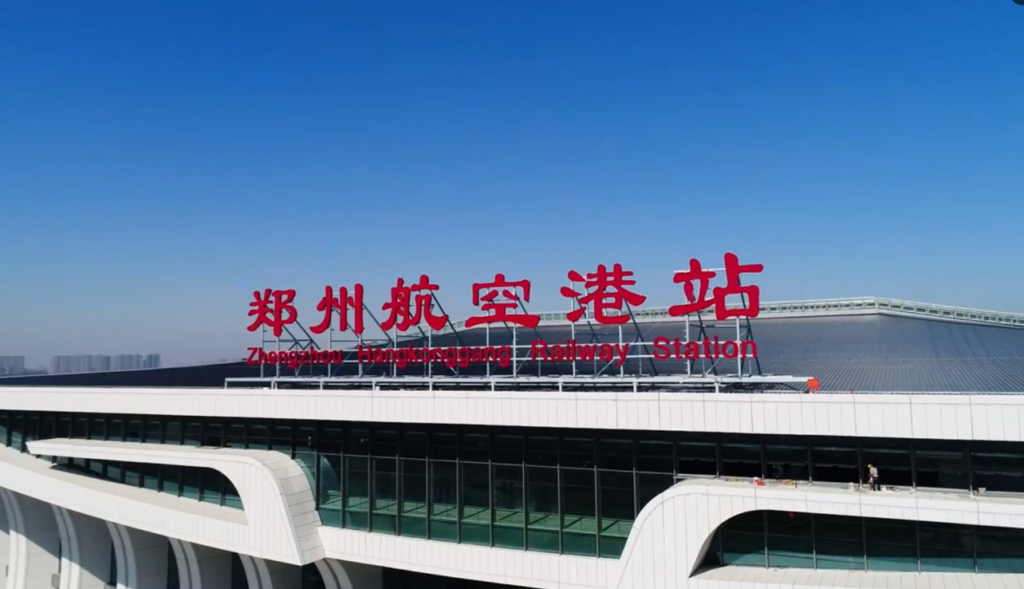
Table of Contents
1.Introduction
In the design of Zhengzhou Airport Station, sloped ceilings play a crucial role in enhancing both the aesthetic and spatial experience. By incorporating sloped ceilings, the architects have introduced a dynamic element to the otherwise conventional design, creating a sense of openness and modernity. This design not only adds visual flow to the interior but also allows natural light to penetrate deeper into the space, making the environment feel more expansive and inviting. The use of sloped ceilings helps to strike a perfect balance between functionality and aesthetics, transforming the station into a landmark architectural feature.
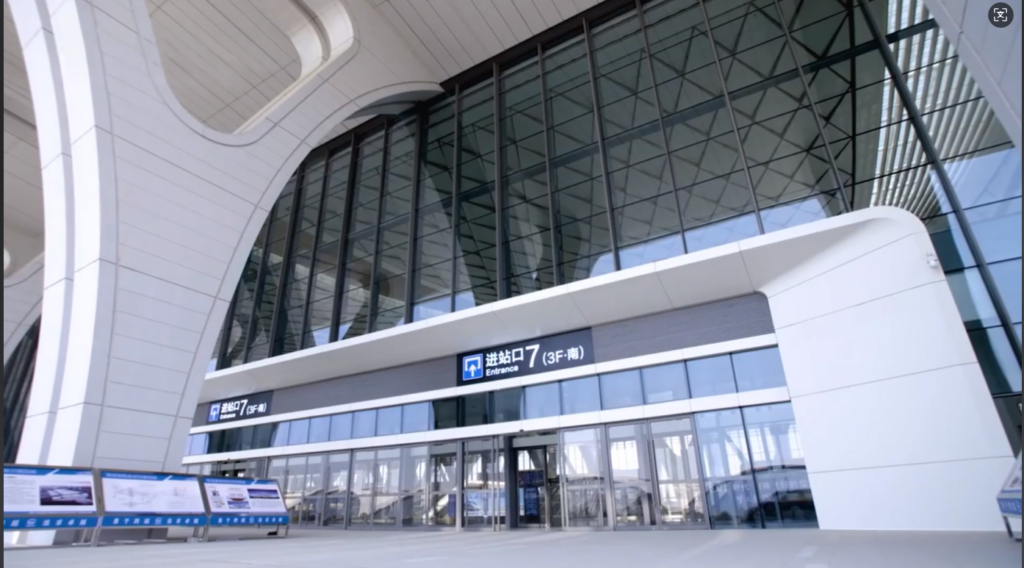
The Role of Sloped Ceilings in Modern Design
Sloped ceilings have become a defining feature in contemporary architecture, offering both aesthetic and practical benefits. In modern spaces like Zhengzhou Airport Station, they help break up the rigidity of flat ceilings, creating a sense of openness and movement. The angled design of sloped ceilings enhances the flow of light and air, making large areas feel more inviting and less confined. This element of design isn’t just about looks—it also improves the acoustics and the overall comfort of the space. By adding sloped ceilings, designers can transform an ordinary structure into something dynamic, balancing beauty with functionality.
Aesthetic Appeal of Zhengzhou Airport Station
Zhengzhou Airport Station stands out for its bold architectural choices, and the use of sloped ceilings plays a significant role in its aesthetic appeal. The gentle slope of the ceilings creates a visually striking effect, drawing the eye upward and giving the space a feeling of grandeur. This, combined with the sleek exterior wall panels, gives the station a modern and refined look. The design is both simple and impactful, allowing natural light to fill the space while providing a sense of openness. The overall aesthetic feels fresh and contemporary, making the station not just a functional transport hub, but a visual landmark in Zhengzhou.
2.Design Concept and Architecture
The design concept of Zhengzhou Airport Station is a perfect blend of functionality and modern aesthetics, where elements like sloped ceilings and exterior wall panels come together to create a harmonious and dynamic environment. The sloped ceilings serve more than just a visual purpose—they shape the experience of the space, adding a sense of height and openness that is crucial in large public buildings. The architecture encourages movement, with the angles of the ceilings guiding the flow of both light and people. The exterior wall panels complement this by providing texture and depth, enhancing the building’s exterior while also contributing to its energy efficiency. Together, these design features not only define the station’s modern look but also improve the overall passenger experience, creating an inviting atmosphere from the moment visitors arrive.
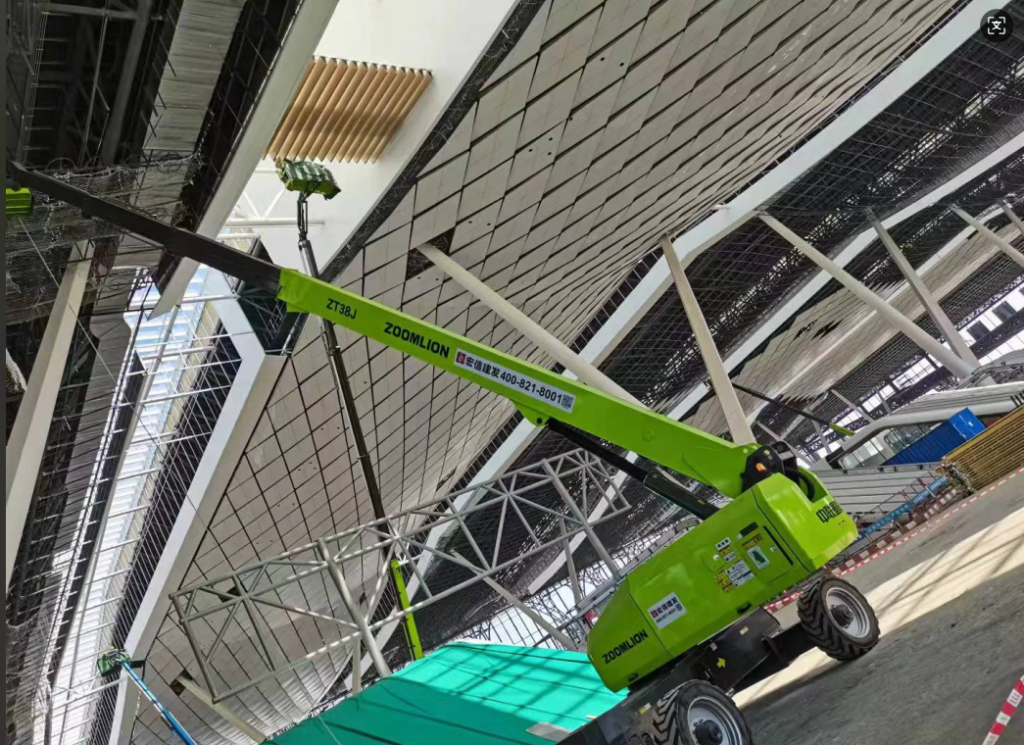
How Sloped Ceilings Contribute to Spatial Experience
Sloped ceilings have a unique ability to transform a space, especially in large, open areas like Zhengzhou Airport Station. By introducing angles, the design creates a sense of height and openness, making the station feel less cavernous and more inviting. The gentle slope not only adds visual interest but also plays with the perception of space, drawing the eye upward and creating a feeling of expansiveness. This subtle shift in geometry changes how people experience the environment, making the vast terminal feel more dynamic and less intimidating. The thoughtful use of sloped ceilings adds a layer of comfort, making the space feel both larger and more intimate at the same time.
The Visual Harmony of Exterior Wall Panels
The exterior wall panels of Zhengzhou Airport Station are a key element in achieving the building’s striking visual appeal. These panels bring a sense of texture and depth to the façade, creating a striking contrast with the smooth lines of the sloped ceilings. Their clean, modern look complements the interior design while also enhancing the station’s external presence. The panels are carefully chosen not only for their aesthetic qualities but also for their functionality, adding insulation and durability to the building. This careful balance between form and function results in a cohesive design that feels unified and well-considered, both from the inside and out. The harmony between the sloped ceilings and the exterior wall panels elevates the station’s overall architectural language, making it a standout example of modern design.
3.Materials Used in Sloped Ceilings and Wall Panels
The materials used in the sloped ceilings and wall panels of Zhengzhou Airport Station are carefully selected to meet both aesthetic and functional requirements. Aluminum, a lightweight yet durable material, is used for both elements, providing a sleek, modern finish that enhances the station’s contemporary design. The use of aluminum for the sloped ceilings allows for a clean, smooth surface that complements the dynamic angles, while also offering excellent resistance to corrosion and wear, making it ideal for high-traffic areas. Similarly, the aluminum wall panels not only contribute to the building’s striking visual appeal but also improve its energy efficiency by offering insulation and protection from the elements. The combination of aluminum’s durability and aesthetic versatility ensures that the materials can withstand the demands of a busy transportation hub while maintaining a high standard of design over time.
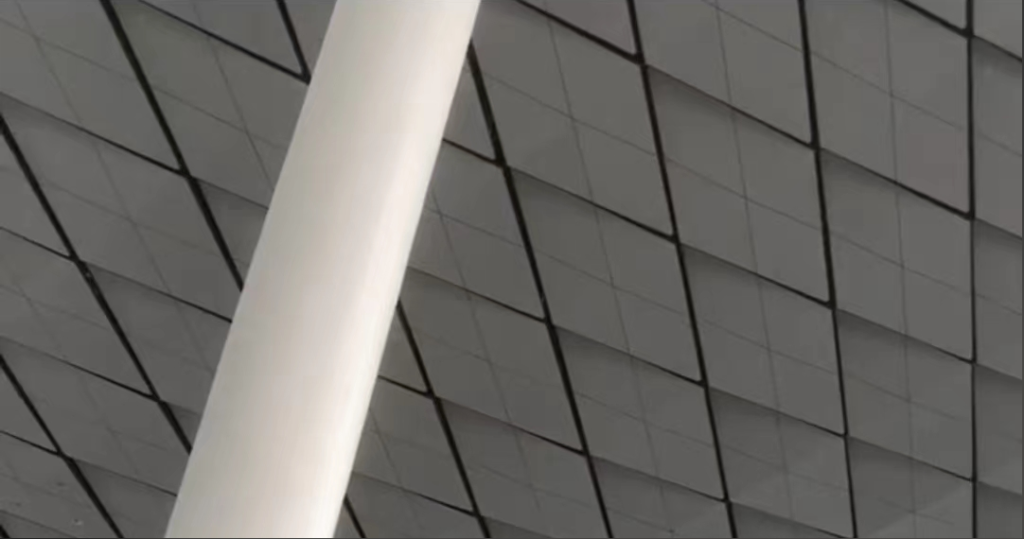
Aluminum as a Sustainable and Durable Material
Aluminum stands out as one of the most sustainable and durable materials for architectural projects, which is why it was chosen for the sloped ceilings and wall panels of Zhengzhou Airport Station. Known for its long lifespan and low maintenance needs, aluminum is an ideal choice for high-traffic environments. Its lightweight nature reduces the strain on structural elements, while its natural resistance to corrosion ensures that the building’s materials remain intact and visually appealing for years to come. Moreover, aluminum is fully recyclable, making it an environmentally friendly option that aligns with modern demands for sustainability in construction. By using aluminum, the design not only meets the aesthetic goals of the station but also contributes to a greener, more sustainable future.
Technical Considerations in Material Selection
When selecting materials for a large-scale project like Zhengzhou Airport Station, technical considerations play a critical role in ensuring both functionality and longevity. The choice of aluminum for the sloped ceilings and exterior wall panels was driven by factors such as weight, strength, and weather resistance. Aluminum’s ability to withstand harsh environmental conditions, such as fluctuating temperatures and moisture, ensures that the materials will endure over time without compromising on performance. Additionally, aluminum’s flexibility allows it to be molded into precise shapes, enabling the clean, angular lines of the sloped ceilings. These technical advantages, along with the material’s ease of maintenance and cost-effectiveness, made aluminum the ideal choice for this ambitious architectural project.
4.Functional Benefits of Sloped Ceilings and Wall Panels
The functional benefits of sloped ceilings and wall panels at Zhengzhou Airport Station go beyond their aesthetic appeal, playing a vital role in improving the overall passenger experience. The sloped ceilings help optimize the flow of natural light, directing it deeper into the space and creating a brighter, more welcoming environment. This not only enhances the station’s visual appeal but also reduces the need for artificial lighting, contributing to energy efficiency. In addition, the angle of the ceilings helps improve acoustics by minimizing sound reflections, making the large, open space feel more comfortable and less noisy. The wall panels, on the other hand, offer practical advantages such as insulation and durability. They protect the building from weather extremes while also maintaining a sleek, modern look. Together, these features create a space that is not only visually striking but also highly functional, ensuring comfort and efficiency for both travelers and staff.
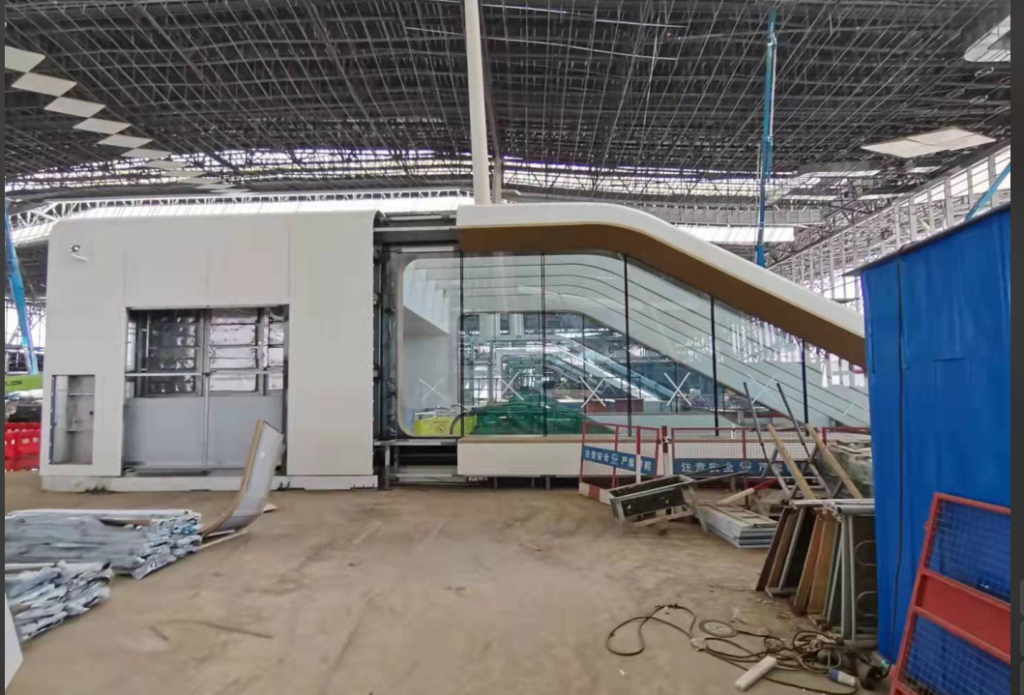
Enhancing Natural Light and Acoustics
The design of Zhengzhou Airport Station takes full advantage of natural light, with the sloped ceilings playing a key role in optimizing sunlight throughout the space. The angled surfaces allow light to filter deeper into the terminal, brightening the interior without the need for excessive artificial lighting. This not only creates a more pleasant atmosphere for passengers but also contributes to energy savings. Additionally, the sloped ceilings help improve acoustics by minimizing sound reverberations, ensuring that noise levels remain controlled in such a large and busy environment. The result is a space that feels airy and welcoming, while also offering a quieter, more comfortable experience for travelers.
Improving Passenger Flow and Comfort
Zhengzhou Airport Station is designed with passenger experience in mind, and both the sloped ceilings and wall panels play important roles in enhancing comfort and flow. The angled ceilings contribute to a more open and spacious feel, easing the flow of people through the terminal. This design helps reduce the sense of crowding, making the station feel more organized and less chaotic. The exterior wall panels, meanwhile, provide structure and guide the movement of passengers, ensuring smooth transitions between different areas of the station. Together, these elements create a layout that prioritizes both functionality and comfort, offering travelers a more efficient and enjoyable experience.
5.Impact on Zhengzhou Airport Station’s Identity
The architectural choices at Zhengzhou Airport Station, particularly the use of sloped ceilings and sleek exterior wall panels, have had a profound impact on the station’s identity. These design elements not only enhance the station’s aesthetic appeal but also help establish it as a modern architectural landmark. The sloped ceilings give the space a distinctive, dynamic feel, making it instantly recognizable and setting it apart from typical transportation hubs. The seamless integration of these elements with the exterior wall panels creates a unified, sophisticated look that speaks to the station’s forward-thinking design. As a result, Zhengzhou Airport Station has become more than just a functional transit point—it has transformed into a symbol of modernity and innovation, representing the city’s ambition and vision for the future.

Creating a Landmark Design
Zhengzhou Airport Station stands as a testament to how bold architectural decisions can transform a functional space into a landmark. The use of sloped ceilings and striking exterior wall panels gives the station a unique and memorable silhouette, making it instantly recognizable. These elements create a sense of flow and movement, mirroring the energy of a transportation hub while adding a touch of elegance. The design goes beyond the typical, elevating the station into a symbol of modernity and progress. Its innovative architecture has set a new standard, turning the station not only into a busy transit point but also into a standout feature of Zhengzhou’s skyline.
Setting New Standards in Transportation Hub Architecture
The design of Zhengzhou Airport Station is a clear example of how modern architecture can set new benchmarks in the design of transportation hubs. By incorporating elements like sloped ceilings and sleek wall panels, the station challenges conventional ideas of what an airport terminal can be. It blends form with function, enhancing the passenger experience while showcasing cutting-edge design principles. The use of these materials creates an environment that is both efficient and aesthetically pleasing, proving that practical spaces can also be visually striking. As a result, the station not only meets the needs of modern transit but also sets a new standard for future transportation infrastructure projects.
6.Conclusion
In conclusion, the integration of sloped ceilings and exterior wall panels at Zhengzhou Airport Station has proven to be a key factor in shaping the station’s architectural identity. These design elements not only enhance the station’s aesthetic appeal but also improve functionality, making the space more inviting, comfortable, and efficient for passengers. The use of durable and sustainable materials, such as aluminum, ensures that the design will endure over time while maintaining its visual impact. By blending innovation with practicality, Zhengzhou Airport Station has set a new benchmark for transportation hub design, offering a glimpse into the future of modern infrastructure. The station stands as a symbol of forward-thinking architecture, balancing form, function, and sustainability in one iconic space.
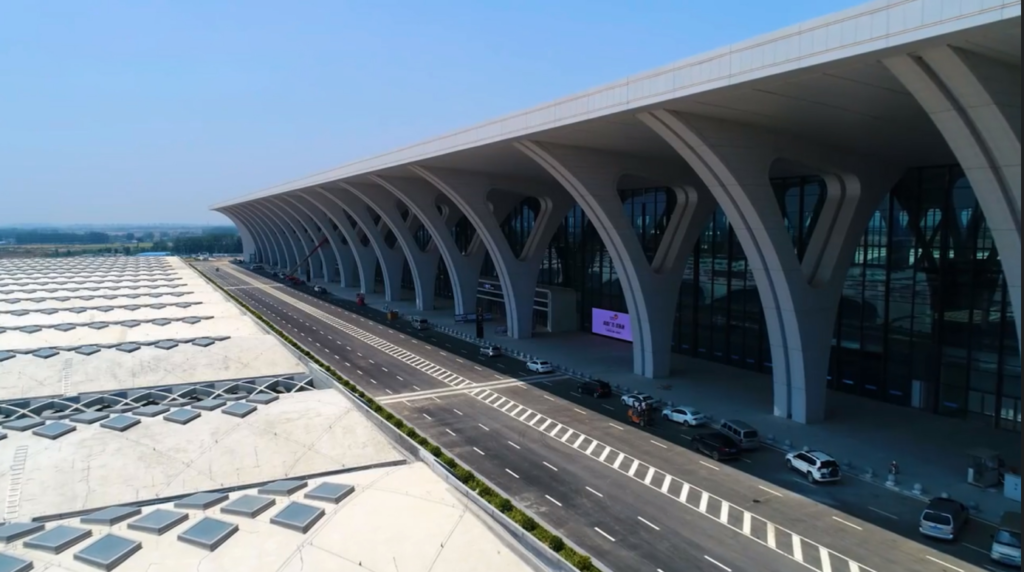
The Lasting Influence of Sloped Ceilings and Wall Panels on Future Projects
The lasting influence of sloped ceilings and exterior wall panels in the design of Zhengzhou Airport Station will undoubtedly inspire future architectural projects, particularly in large-scale transportation hubs. These elements have proven to be not only aesthetically striking but also highly functional, contributing to improved acoustics, natural light distribution, and passenger comfort. As cities continue to prioritize innovative and sustainable design, the use of sloped ceilings and modern materials like aluminum will likely become a standard in future infrastructure projects. The success of Zhengzhou Airport Station demonstrates that architectural features can elevate both the functionality and the visual impact of a space, setting a precedent for how design can shape the user experience in public spaces for years to come.
